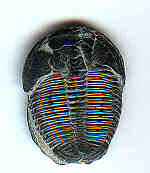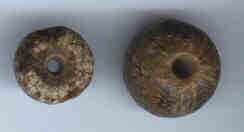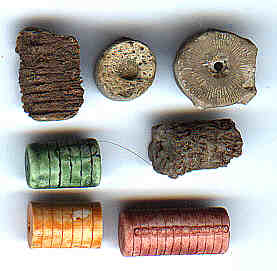Your path =Home>Beadmaking and Materials Center>Organic Materials> Fossils
Beads From Fossils
Fossils are signs of past life, usually something that has turned to stone, been covered by stone or left an impression in stone.
Just holding a fossil connects you to life long ago, sometimes 20 million, sometimes 200 million or more years ago. I was very excited about fossils when I was young. And they are still exciting to me today.
People have often made beads from fossils. Many have patterns and designs so that people want to keep them. In fact, Some of the oldest beads known, 38,000 years old or so, were made from fossil seashells.
|
Above, a Trilobite fossil.
Note the three lobes of its body, from which it gets its name.
|
Above, fossil sea urchins.
Note lines of radiating dots, where spines were attached.
|
Crinoid stem pieces make natural beads. Three have been commercially dyed.
__________________________________________________
Small Bead Businesses | Beading & Beadwork | Ancient Beads | Trade Beads
Beadmaking & Materials | Bead Uses | Researching Beads | Beads and People
Center for Bead Research | Book Store | Free Store | Bead Bazaar
Shopping Mall | The Bead Auction | Galleries | People | Events
The Bead Site Home | Chat Line | Contact Us | Site Search Engine | FAQ


